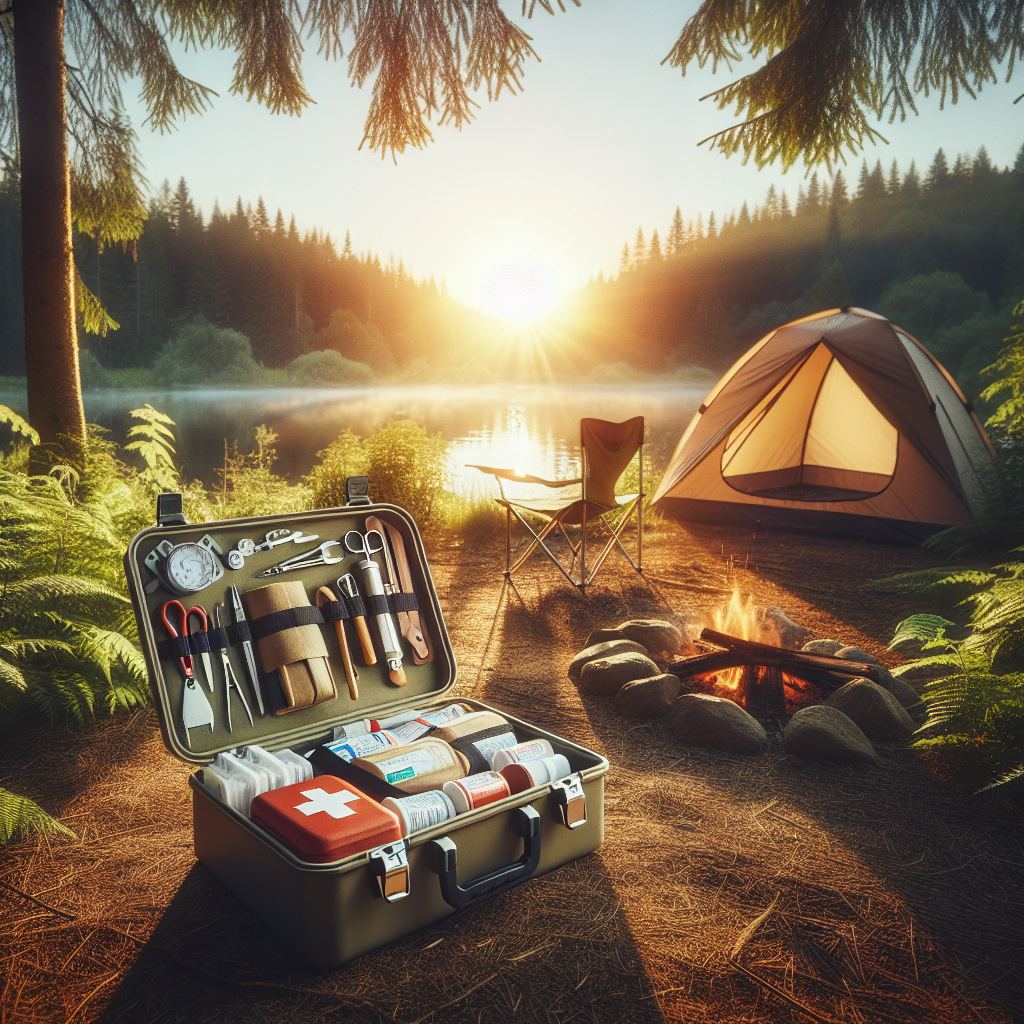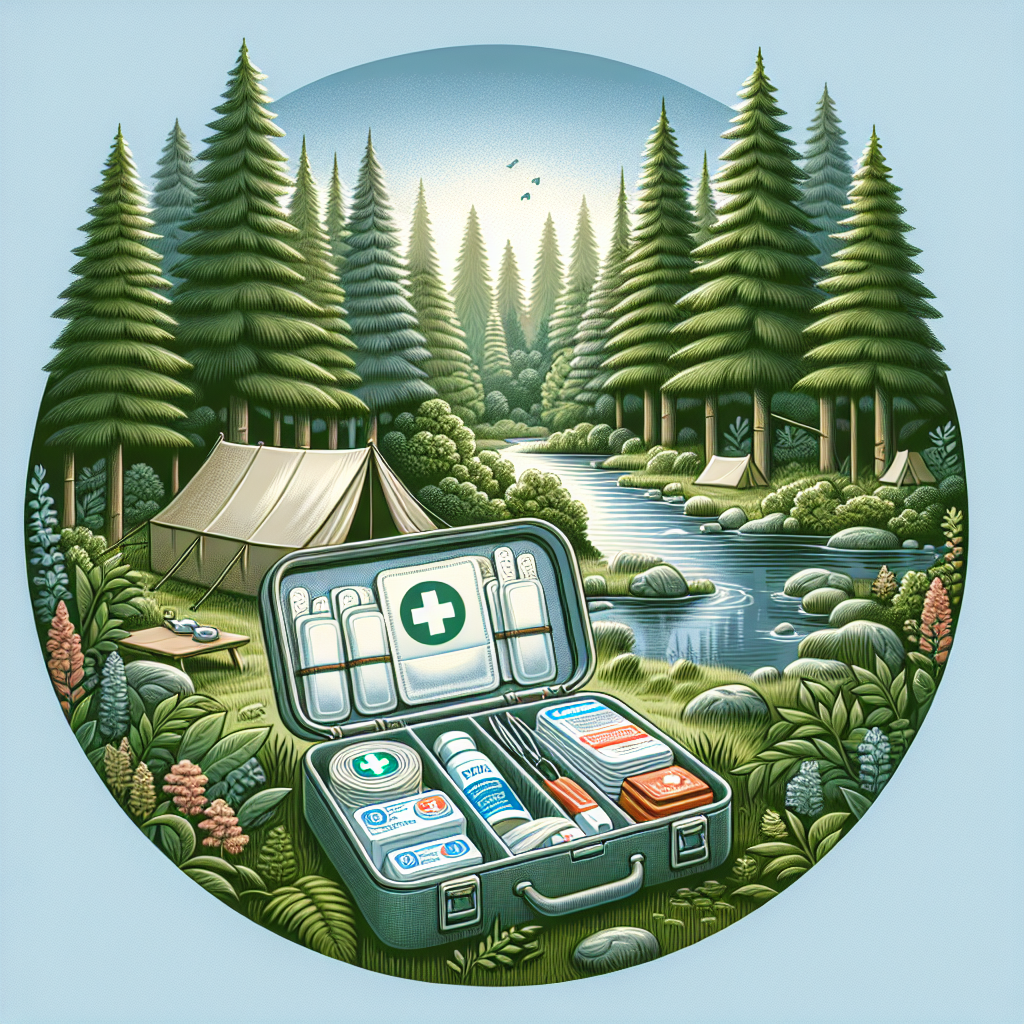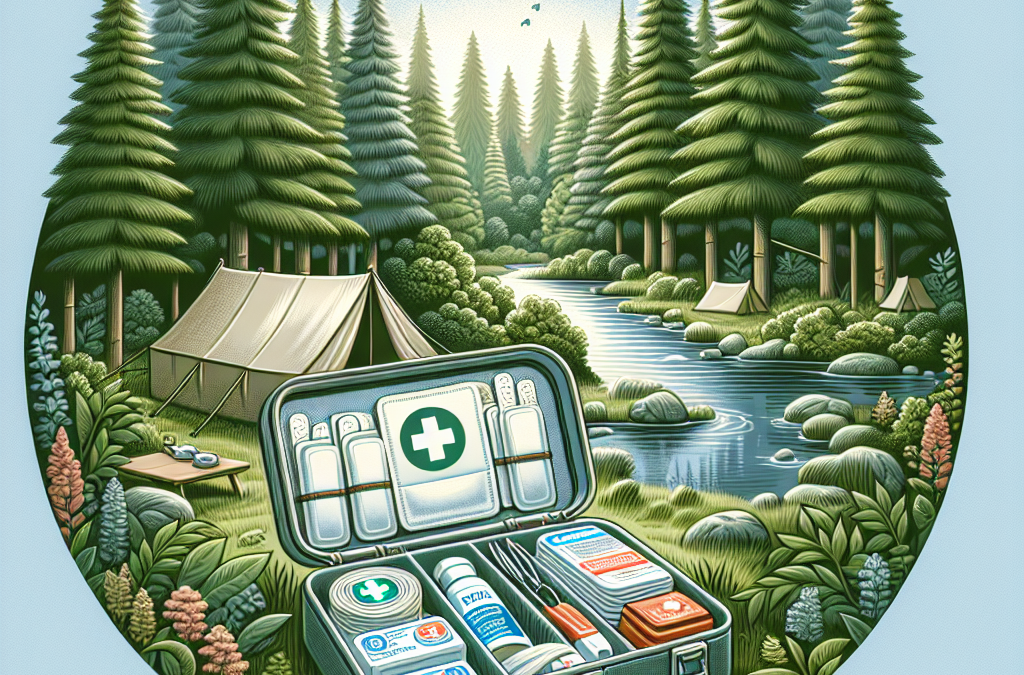Setting foot on a camping trail, away from the bustling city noises and in the embrace of wilderness, offers not just an adventurous spirit, but also demands preparedness and caution. With TrailTrekTribe, your adventure is curated with a perfect blend of thrill and safety, because we place immense value in the importance of first aid knowledge while camping. Whether you’re scaling a steep hill, rock climbing or simply admiring the night sky amidst nature, possessing first aid skills could provide immediate relief in case of unexpected injuries or health issues. Ready to pack your adventure bag? Make sure to slide in a first aid kit, because your safety is as important to you, as to us, at TrailTrekTribe.

Understanding First Aid Basics
Knowing how to administer first aid is an essential skill, particularly when you are venturing outdoors on camping trips where medical help may not be readily accessible. First aid is the immediate care you can provide to someone suffering from an injury or illness, with the aim to preserve life, prevent worsen conditions, and promote recovery.
Knowing the ABC of first aid
The ABC of first aid stands for Airway, Breathing, and Circulation. These are the very basic life-saving concepts everyone need to know. Ensure the airway is clear, help the patient to breathe if needed, and then check for circulation, which includes heart rate or pulse and the presence of severe bleeding.
Importance of First Aid certification
Getting certified in first aid not only validates your skills but also gives you the confidence to act quickly and effectively in emergency situations. It provides you with structured training on how to handle various types of medical emergencies, with a special focus on technique and safety.
Basic First Aid kit essentials
Your First Aid kit should include essential items such as bandages, gauze, adhesive tape, antiseptic wipes, tweezers, cold packs, disposable gloves, breathing barriers with one-way valves, and a first aid reference guide, at a minimum. Always adjust items depending on the nature of your camping trip.
Recognizing Common Camping Injuries and Illnesses
Knowing how to identify common camping illnesses and injuries can help you administer timely first aid and prevent further complications.
Common injuries during camping
Common camping injuries include cuts, scrapes, burns, insect bites and stings, and sprains. Having a basic understanding of how to deal with these common injuries can save precious time in emergency situations.
Signs of illness in the wilderness
Watch out for signs of common ailments like dehydration, altitude sickness, and hypothermia. You should also be aware of the signs of heatstroke and food poisoning as they can severely disrupt your camping experience.
Hazards associated with wild flora and fauna
Different regions have their own unique set of flora and fauna that may pose hazards. Educate yourself about poisonous plants, harmful insects, and local wildlife that you could encounter while camping.
Handling Minor Injuries and Ailments
With the right knowledge and resources, many minor injuries and ailments can be managed on the spot.
Treating cuts and abrasions
Clean the wound with clean water and apply an antiseptic if available. Cover it with a sterile bandage to protect it from further injury or infection.
Dealing with minor burns
Cool the burn under running water to soothe the skin, then gently apply a burn cream or gel. Cover the burn with a sterile dressing.
Addressing allergies and insect bites
Apply a hydrocortisone cream or calamine lotion to soothe skin irritations caused by allergies or insect bites. If anaphylaxis signs occurred, you should immediately seek professional medical help.
Managing Serious Accidents and Emergencies
Severe accidents and emergencies require special attention and care, as immediate intervention can often make the difference between recovery and long-term damage or even death.
Recognising signs of serious illness
Watch out for signs such as severe vomiting or diarrhea, inability to drink or retain fluids, confusion or altered mental state, severe abdominal pain, and difficulty breathing.
Dealing with fractures and dislocations
You should stabilise the injured part and avoid unnecessary movement. Use a splint and bandages to immobilise the injured area and apply a cold compress to reduce swelling. Remember, never try to realign the bones yourself.
Actions for unconsciousness and CPR basics
If a person became unconscious, immediately check their airway, breathing, and pulse. If the person is not breathing and there is no pulse, perform CPR. The basic guide is to perform 30 chest compressions followed by 2 rescue breaths.

Considering Specific Camping Conditions
Camping brings unique challenges that can vary widely based on the location and season.
Dealing with hypothermia and heatstroke
For hypothermia, slowly warm the person’s body, Avoid giving them alcohol or caffeine, and seek medical help. For heatstroke, you should cool the person rapidly using whatever methods you have at hand and give them lots of fluid to drink if they are conscious.
Protecting against dehydration
Encourage everyone to drink lots of fluids, especially when it is hot, when you are at high altitude, or when you’re engaged in extensive physical activity.
Addressing Altitude sickness
For mild symptoms, it often helps to stop ascending, rest and hydrate. If the symptoms get worse, immediate descent and medical attention are required.
Understanding Wilderness First Aid
Wilderness First Aid differs slightly from the basic First Aid you may be familiar with because you’re dealing with unique challenges nature brings.
Differences between regular and wilderness First Aid
While regular First Aid focuses on stabilizing victims until professional help arrives, wilderness First Aid includes strategies for extended care when help may not arrive for several hours or days.
Survival techniques remedy in the wild
Knowing how to use natural remedies from plant sources and survival techniques like making a makeshift splint can be very beneficial.
Use of nature’s resources for First Aid
Certain plants have medicinal properties that can help soothe injuries and ailments. For example, plantain leaves can soothe insect bites and stings, and yarrow can help stop bleeding.
Prioritizing Hygiene and Sanitation
Maintaining good hygiene and sanitation while camping can directly impact your health.
Importance of hygiene while camping
Practicing good hygiene prevents the spread of illnesses and diseases. It includes activities such as regular handwashing, safe food handling, and proper waste management.
Avoiding common camping hygiene mistakes
Typical mistakes include not washing hands before meals, drinking unsafe water without treating it first, and not properly disposing of human waste or trash.
Maintaining sanitation in the wild
Take steps like bringing biodegradable soap and using portable camping toilets to manage sanitation in the wild.
First Aid for Kids on Camping Trips
Camping with kids brings additional responsibilities. It’s crucial to ensure their safety and know how to handle common childhood ailments.
Considerations for children’s safety
Supervise their activities closely to prevent injuries, teach them about hazards and what to do in emergency situations, and adjust First Aid kits to include child-appropriate medications and supplies.
Teaching kids basic First Aid
Teach kids basic first aid skills appropriate for their age. They should know how to call for help, address minor wounds, and understand the importance of hydration and sun protection.
Special considerations for children’s ailments in the wild
Children’s bodies respond differently to extreme temperatures and physical stress. Know what to watch for and incorporate appropriate preventive measures into your camping routine.
First Aid Training Options for Campers
A comprehensive first aid training program could be the difference between life and death in a critical situation.
Recommended First Aid training programs
The American Red Cross and the Wilderness Medical Society offer excellent training and certification programs that are specifically geared towards the outdoors.
Benefit of hands-on First Aid training
Hands-on training simulates real-world situations and gives you the practice and confidence to handle emergencies effectively. It’s the best way to gain practical skills.
Online resources for emergency First Aid
There are many online resources and tutorials available that can help you understand the basics. These resources are great to get started or for a quick refresher.
Packaging a Comprehensive Camping First Aid Kit
Building a camping first aid kit requires a different approach as you need to consider the outdoor-centric injuries and illnesses.
Essentials for every camping First Aid kit
Start with basics like bandages, gauze, alcohol wipes, tweezers, and a small digital thermometer, and expand the kit based on your specific needs.
Considerations based on camping spot
Different camping spots have specific considerations. For example, if you’re camping in a bug-heavy area, don’t forget to pack insect repellent and sting relief treatments.
Customizing the First Aid kit based on camping group’s needs and capabilities
Customise your First Aid kit based on the people who are going camping. Include specific medications for those with allergies, diabetes, or other relevant conditions. Always pack extra supplies.
Knowledge of first aid is of paramount importance during camping trips. Equip yourself with both the knowledge and tools to respond to medical emergencies. Happy adventures await!

